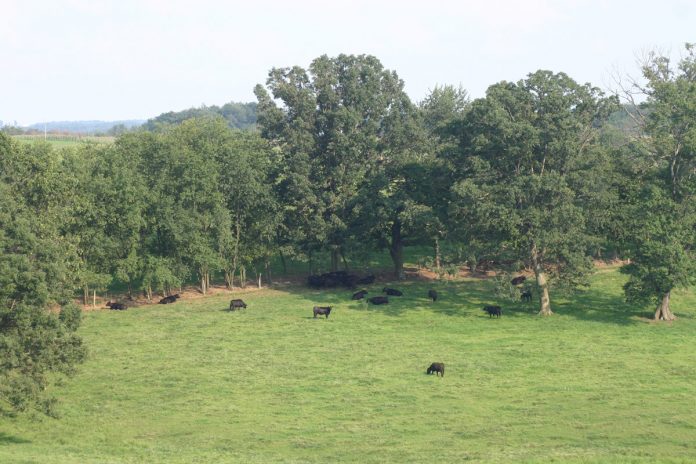WOOSTER, Ohio – Despite the summer sun, excessive heat and fewer rains typically associated with Ohio summers, producers can take steps to increase summertime productivity in pastures composed of grasses that typically grow best in cooler conditions, said a forage expert from Ohio State University’s College of Food, Agricultural, and Environmental Sciences.
To lessen the summer slump in cool-season grass pastures, producers can follow the 4 Rs for summer grazing, said Rory Lewandowski, agriculture and natural resources educator for the college’s outreach arm, Ohio State University Extension.
“Producers need to be looking and planning ahead,” Lewandowski said. “Even though we’ve gotten a lot of rain in recent days, we will get to the point where dry, warmer temperatures take over and rainfall slows.
“And either a dryer or warmer weather pattern can cause grass to grow slower, so we need to start managing for that slower grass growth now.”
The 4 Rs focus on: removing seed heads; the right starting height; residual leaf area; and rest period:
Removing seed heads:
Clipping seed heads in late June will return grass plants to vegetative growth and improve the quality of grazed forage.
Right starting height:
To reduce the risk of overgrazing, livestock should be kept from grazing on grass that is too short. The optimum height for grazing depends on the grass mixture: perennial ryegrass should be grazed starting at 6 to 8 inches; endophyte-infected tall fescue and Kentucky bluegrass should be grazed starting at 5 inches; and orchardgrass, endophyte-free and novel endophyte tall fescue grass should be grazed starting at 8 inches.
Residual leaf area:
Leaving residual leaf area benefits the soil by providing more shade to cool soil temperatures and lessen moisture loss. It also allows root growth and function and allows the plant to recover faster from grazing defoliation.
Rest period:
After a grazing pass, allow enough time for the plants to regrow back to the right grazing height. During the summer months, that could be between 30 to 50 days.
“Whereas last year we were talking to grazers on how to protect their pastures during drought, this year with the more rainfall and cooler temperatures that we’ve experienced thus far, producers can continue to manage to promote productivity and get good animal performance,” Lewandowski said. “The main emphasis here, as we get into summer, is “that” these cool-season grasses require a higher level of management if you want to keep your pastures productive throughout the growing season.”
STAY INFORMED. SIGN UP!
Up-to-date agriculture news in your inbox!











